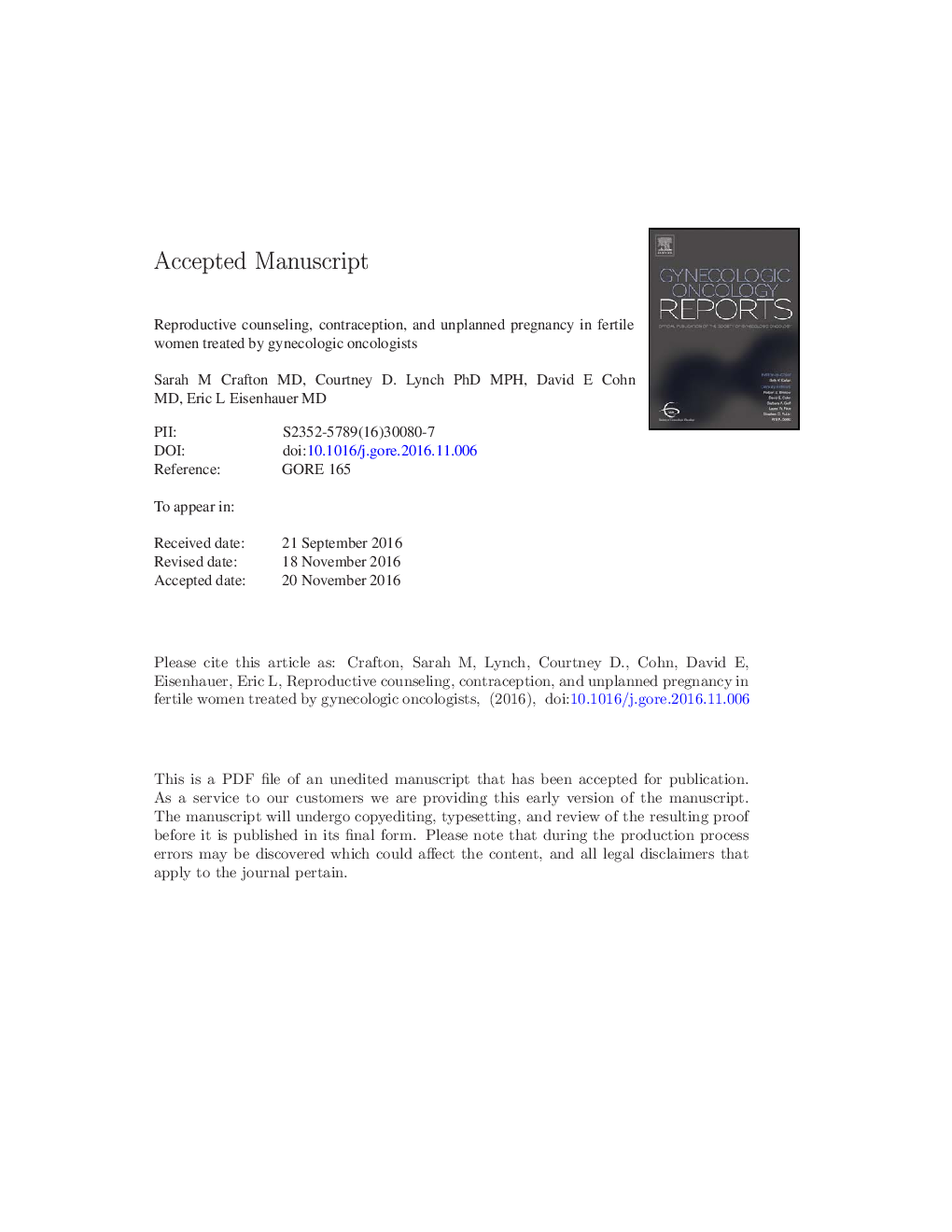| Article ID | Journal | Published Year | Pages | File Type |
|---|---|---|---|---|
| 5695499 | Gynecologic Oncology Reports | 2017 | 22 Pages |
Abstract
Members of the Society of Gynecologic Oncology (SGO) were surveyed electronically regarding consistency of counseling patterns of contraception and fertility concerns, most and least common contraceptive methods utilized, referral patterns, and incidence of unplanned pregnancy. Of the 1424 SGO members identified, 261 participated in the questionnaire, yielding a response rate of 18%. Eighty-two percent of respondents agreed unplanned pregnancy is a potential problem, but only 57% believed their patients understood unplanned pregnancy is possible during treatment. Half of respondents report “always” in terms of frequency that contraception is addressed among their high-risk patients. After adjustment for gender, we found that the odds of reporting providing fertility counseling were nearly three times higher among attendings as compared to fellows [AORÂ =Â 2.72; 95% CIÂ =Â (1.44, 5.12), three times higher in women as compared to men [AORÂ =Â 2.80; 95% CIÂ =Â (1.46, 5.38)], as well as in individuals 50Â + years as compared to those <Â 40Â years old [AORÂ =Â 4.91; 95% CIÂ =Â (2.05, 11.74)]. Ninety-six percent reported <Â 5 unplanned pregnancies, to their knowledge, in the previous five years of clinical practice. Most providers acknowledge that unplanned pregnancy is a potential risk in fertile gynecologic oncology patients, but only half believe their patients understand an unplanned pregnancy is possible. An opportunity exists to provide more directed counseling regarding fertility during and after cancer therapy, and to educate patients and providers regarding more reliable, long acting contraceptive methods.
Keywords
Related Topics
Health Sciences
Medicine and Dentistry
Obstetrics, Gynecology and Women's Health
Authors
Sarah M Crafton, Courtney D. Lynch, David E Cohn, Eric L Eisenhauer,
